Even if you’ve visited before, you can enhance your experience at this magnificent garden with these eight tips on things to appreciate.

Strolling along the mile of gravel paths through the Morikami Museum and Japanese Gardens in Delray Beach, you will discover the outdoors in a whole new way.
For those used to hiking through the landscape, this is the place to slow down and take your time.
Feel the breeze on your skin, inhale the aroma of bushes and flowers, fill your ears with the sounds of flowing water and singing birds and your eyes with the beauty all around.
It’s the place to let yourself experience harmony with nature instead of hurrying through it.
Covering 16 acres, the Morikami Museum and Japanese Gardens is made up of six distinct landscapes inspired by significant gardens of Japan.
The six Morikami Japanese Gardens
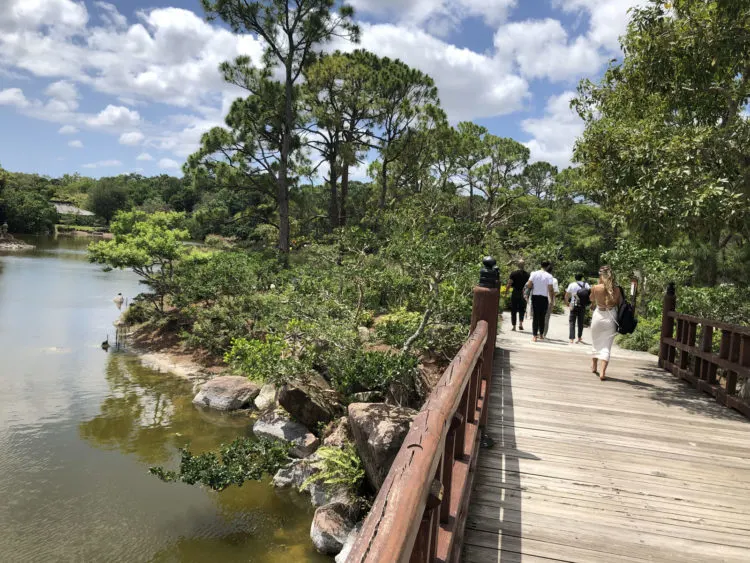
1. Paradise Garden
Imagine yourself as a battle-weary Samurai in the 13th and 14th centuries, a time of prolonged civil war in Japan. Wanting a break from combat, you visit this garden in search of peace.
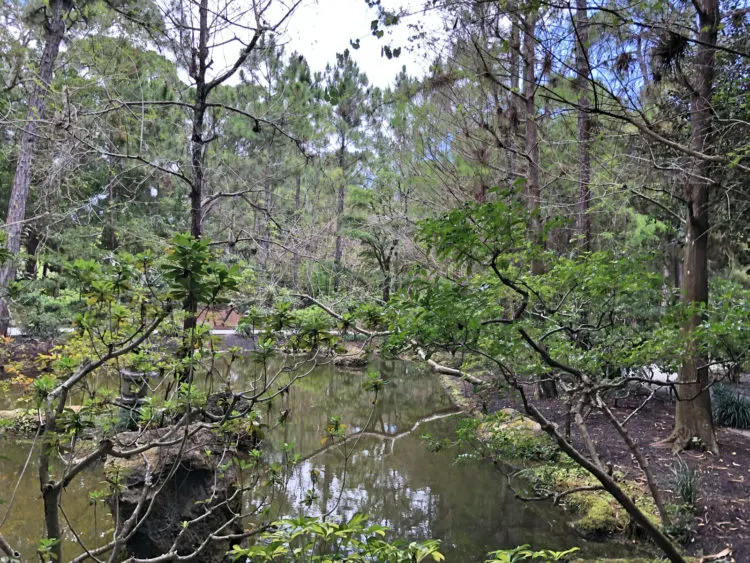
Viewing Tip: The lake is shaped like the Japanese character representing “heart.”
2. Early Rock Garden
This style became popular around the 12th century as the Samurai class embraced Zen Buddhism that emphasized self-reliance, sacrifice and discipline.
The garden, made of rocks arranged to suggest waterfalls without flowing water, was inspired by Chinese pen-and-ink drawings.
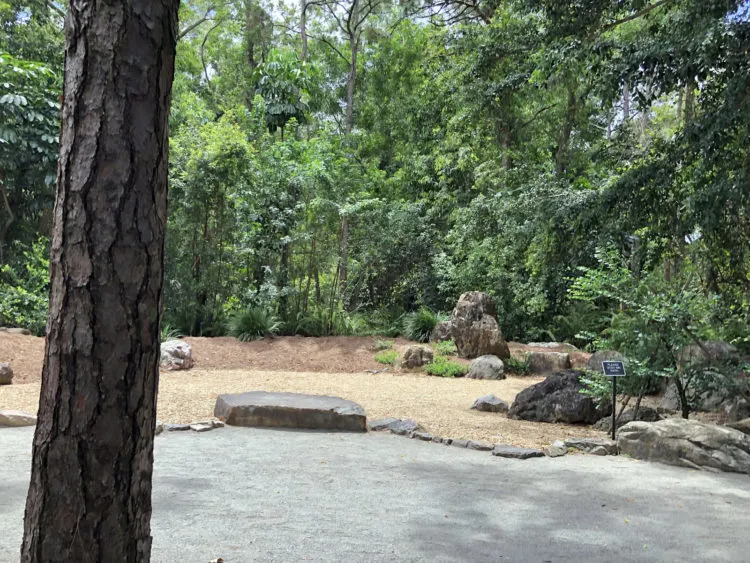
3. Shinden Garden
If you were a nobleman living about 1,000 years ago in Japan, you would have a garden like this just outside your door. Happy to share the beauty of your garden, you might invite guests to board a boat to better appreciate the opulence of this pleasure spot.
As you floated along, you might indulge your guests with a poetry exchange as you treated them to music performed by musicians on the islands.
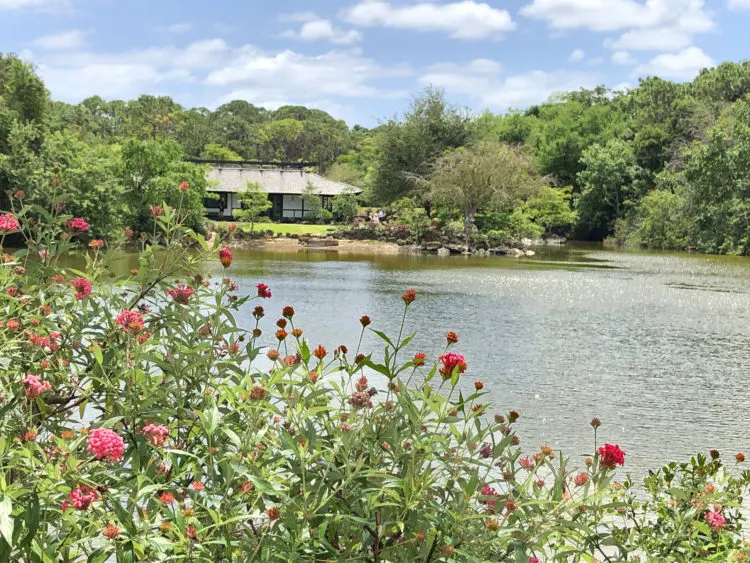
Viewing Tip: Think of yourself as a nobleman’s guest for the day. But instead of viewing these gardens from a boat, you enjoy them from the zig-zagging and side-by-side bridges that connect different parts of the garden and provide ever-changing views.
4. Hiraniwa Flat Garden
In the 1700s when Tokyo was the largest city in the world, this type garden became popular. If you were one of the three million inhabitants, you’d probably be interested in finding a patch of garden that you could enjoy.
Gardens were small so designers used the element of shakkei or “borrowed scenery” to trick your perceptions.
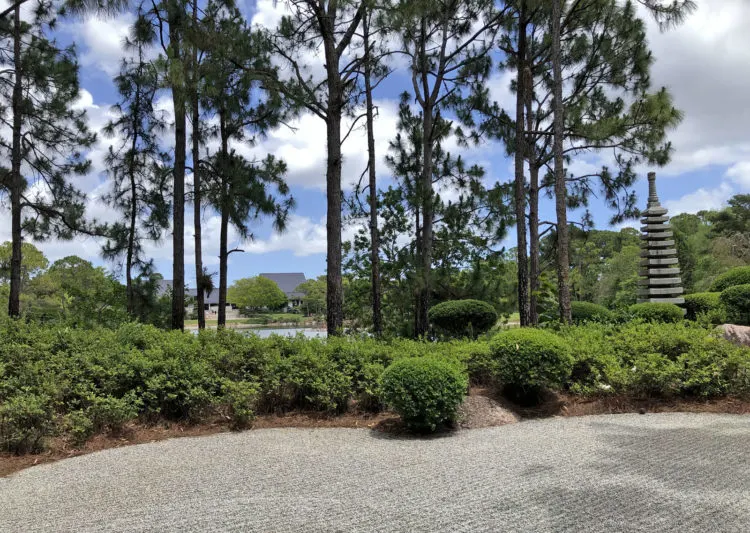
5. Modern Romantic Garden
In the late 1700s and 1800s, Japan opened itself to western influences. In the era’s gardens, the abstract and obscure was replaced by a return to nature.
Here you’ll see wooded glens and gentle brooks trickling besides the paths that rise and fall through the landscape. The paths are here for you to explore
Enjoy the sight and sound of this running stream that adds sensual pleasure to the Romantic Garden. Morikami Museum and Japanese Gardens photo by Deborah Hartz-Seeley.
Viewing Tip: Some of the paths through this garden are steep. For those who prefer a gentler route, stick to the wider walkways. Morikami Museum and Japanese Gardens photo by Deborah Hartz-Seeley
6. Karesansui Late Rock Garden
Perhaps the most peculiar garden you’ll see at Morikami is the Zen Garden or Karesansui that translates to “dry landscape.”
In the 15th and 16th centuries, you’d have discovered such gardens around Zen Buddhist temples where monks found they enhanced meditation.
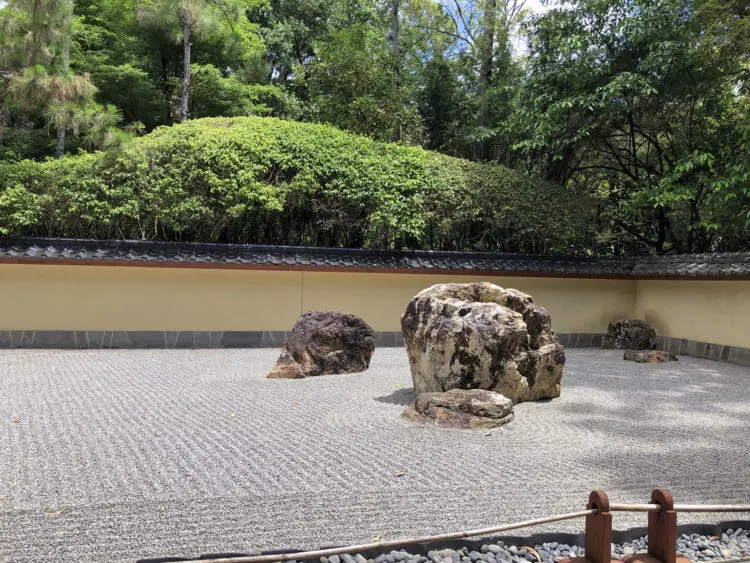
Viewing Tip: Instead of grabbing a selfie and moving on, sit on the backless wooden benches overlooking the garden.
From this vantage point, no single element should draw your attention and you see the landscape as a whole, as if it were a museum exhibit.
Maintaining the Karesansui Garden
At Morikami Museum and Japanese Gardens, it takes about 90 minutes of work at least once a week to keep the gravel clean and sculpted.
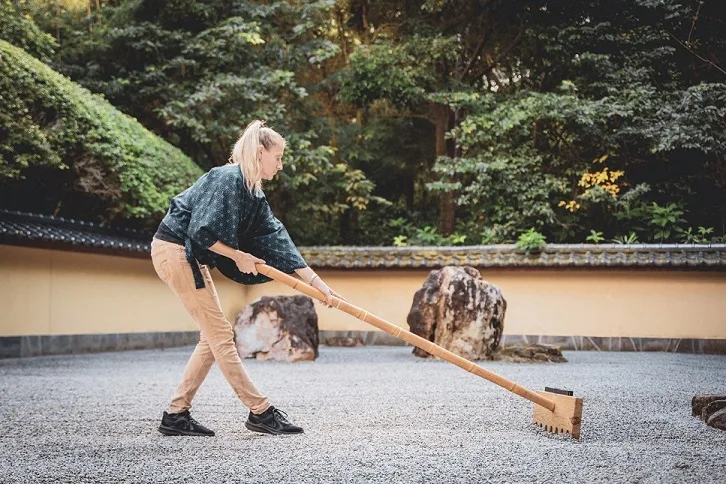
A leaf rake is applied in one direction to remove any debris covering the stones. Then a heavy wooden rake with large wedge-shaped teeth and bamboo handle is used to create the wave patterns.
The work is hard, especially when temperatures and humidity are high and the gravel reflects the light and heat.

Viewing Tip: A schedule of events lists times when you can see a demonstration of the raking process in the garden. It’s free to garden visitors.
Eight elements to discover at Morikami Museum and Japanese Gardens
As you walk through the gardens, look for these design elements and discover how they are used to add meaning to the gardens and your visit.
- Age: Age is revered in Asia for its stability, endurance and wisdom. Look for older trees with their gnarled roots and trunks covered with lichens. Also notice the ying-and-yang of these trees’ delicate lacy leaves as opposed to their sturdy deep roots.
- Bamboo: It’s an important part of a Japanese garden because it propagates itself and grows quickly. Listen for its rustle especially when there’s a breeze. When bamboo grows thickly, it can actually darken the area but when thinned, it brings in light.
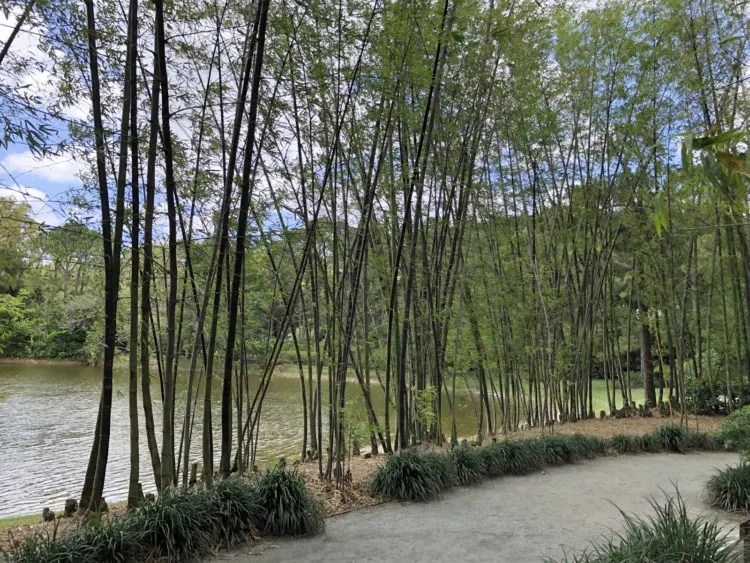
- Bridges: The bridges do more than join pieces of land. For example, a side-by-side bridge slows you down so you can’t run and miss what the garden designer wants you to see. And, as you go from one part of the bridge to another, you are provided a new perspective of the garden around you.
- Deer Chaser: Many years ago, someone came up with this ingenious solution for chasing critters from streams. The combination of bamboo “pipes” filling with water and then periodically depositing it into the stream creates a monotonous and repetitive sound that becomes almost hypnotic. Although western children viewing a deer chaser often drop pennies into the water thinking it is a wishing well, it is not.
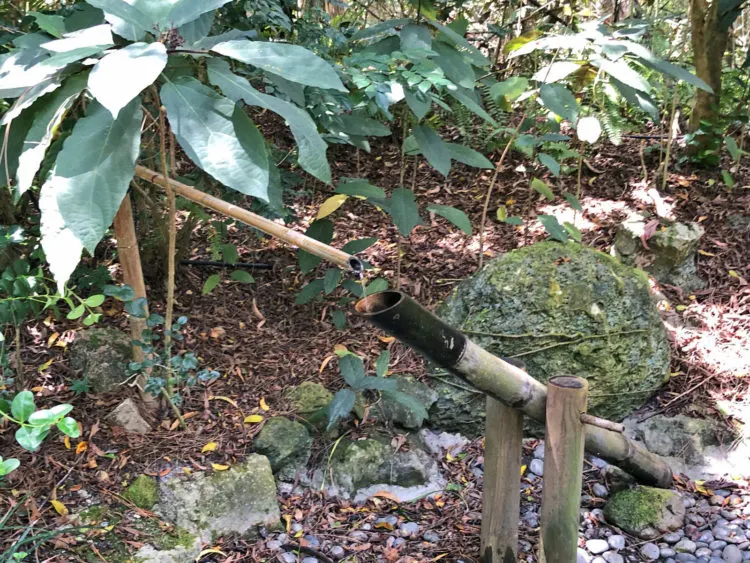
- Ferns: They, like humans, have the ability to grow and prosper in dark times.
- Rocks: Rocks can survive the elements, an attribute that also is important in man. The Samurai would use rocks to barter for goods. And when they received a new rock, they would name it and have a party. Many of the rocks you see at Morikami were brought in 17 rail cars from Texas; others are the limestone rocks native to Florida.
- Water: Moving water adds life to the garden. When it is still, it can act as a mirror reflecting what’s around it.
Many of the trees are angled towards the water providing energy to the landscape and reminding us that we, like trees, need water.
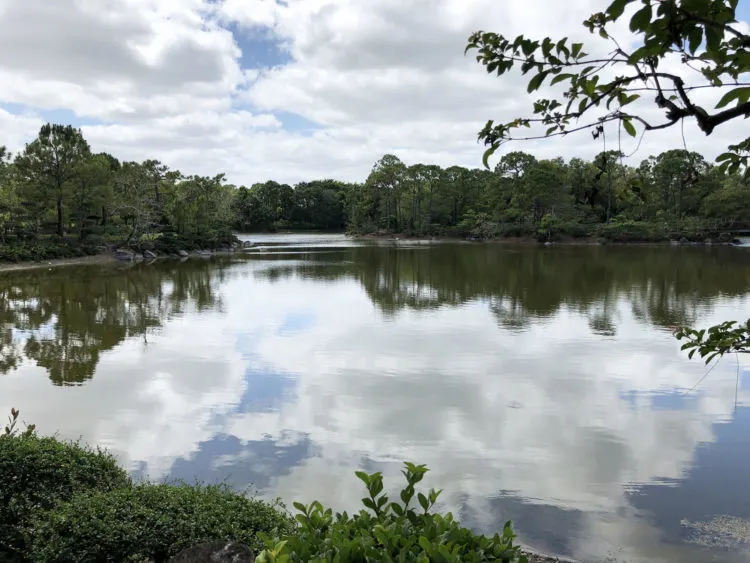
- Water Iris: You may be lucky enough to see yellow and purple irises growing in the lakes. Some say the leaves of these water irises or shobu resemble the shape of a Samurai’s “shield.”
As a result, on May 5 of each year, Japanese mothers celebrate Shobuyu. That’s when they take the iris leaves and grind them to put in the bath water of their baby boys. This is to make the youngsters strong and brave like Samurai.
(Sources: Freya Homer, docent at Morikami Museum and Japanese Gardens and professor of Japanese culture at Nova Southeastern University. If you want to learn more about specific plants used in the garden, resources are available in the Morikami library.)
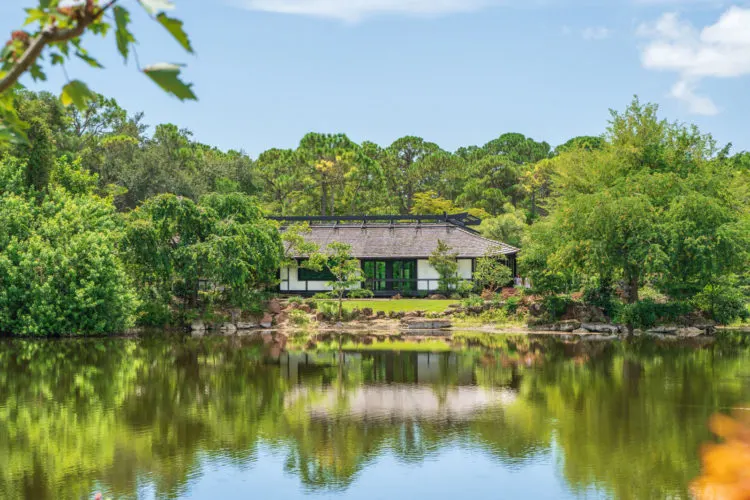
The Morikami connection
In the early 1900s, a group of young Japanese farmers arrived in what is now northern Boca Raton and formed an agricultural colony they called Yamato, an ancient name for Japan.
The colony’s farming endeavors were unsustainable and almost all members of the original colony returned to Japan.
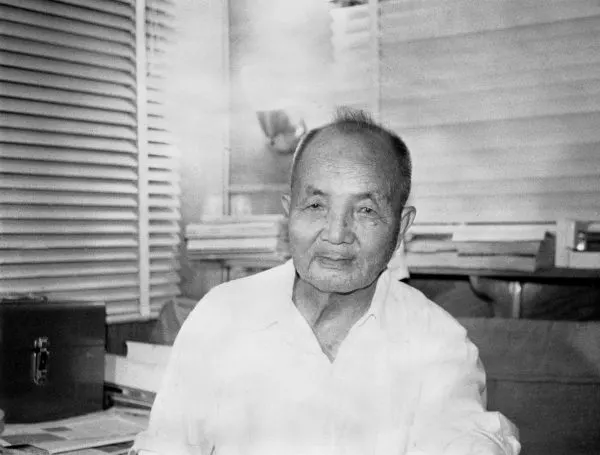
In the mid-1970s, George Sukeji Morikami was one of the last remaining settlers. He donated his land to Palm Beach County for it to become a park in living memory of the Yamato Colony.
The original Morikami Museum and Japanese Gardens opened in 1977.
The garden you see today was re-envisioned in 1999 by noted Japanese landscape architect Hoichi Kurisu. He was engaged to create Roji-en, which translates to “Gardens of the Drops of Dew.” The garden, completed in 2001, is described as a “complex for the new millennium.”
Source: Much of this history comes from the Morikami Museum and Japanese Gardens’ website where you will find the full story. More information is available from the Boca Raton Historical Society.
The Morikami Museum
Opened in 1993, the main building houses museum exhibits that explore the history and culture of Japan. Programs, demonstrations and classes bring Japan a little closer to the participant. There is even a tea house where you can see the ancient art of the tea ceremony being performed (see the schedule of demos).
On the museum grounds, you’ll discover the Yamato-kan modeled on a Japanese villa. It served as the main building when the museum opened in 1977. It features exhibition rooms with an open-air landscaped courtyard with a dry garden.
This building was closed for several years and re-opened in 2022 after being renovated with new exhibits focusing on the history of the community. There are three short documentaries films that highlight the stories of the Yamato colonists who came from Japan; the life of George Morkami, the museum’s namesake, and the philosophy of Hoichi Kurisu, the Japanese landscape designer responsible for the design of the Morikami Garden.
Rambler tip: Don’t miss the bonsai collection that’s adjacent to the Yamato-kan building and note how long some of these bonsai have been in training.
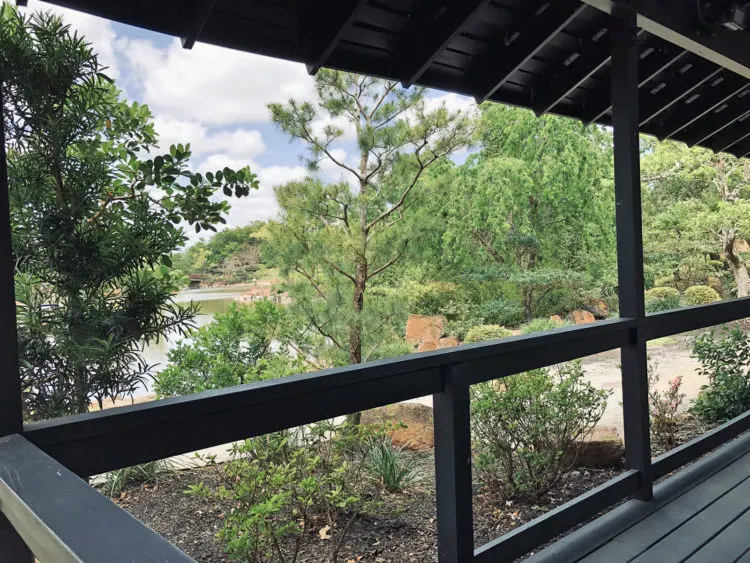
Visiting the Morikami Museum and Japanese Gardens
Where: 4000 Morikami Park Road, Delray Beach; 561-495-0233; https://morikami.org/
Morikami hours: 10 a.m. to 5 p.m. Tuesday through Sunday. Closed Mondays and major holidays.
Morikami tickets: Adults, $15; seniors, $13; children (five and under), free. The garden complex includes the museums, teahouse, gift shop, Bonsai exhibit and the Cornell Café. Morikami Museum and Japanese Gardens tickets available at the door only. Free parking.
Plan your visit: Morikami Museum and Japanese Gardens classes; Morikami Museum exhibits; Morikami Museum and Japanese Gardens photo policy
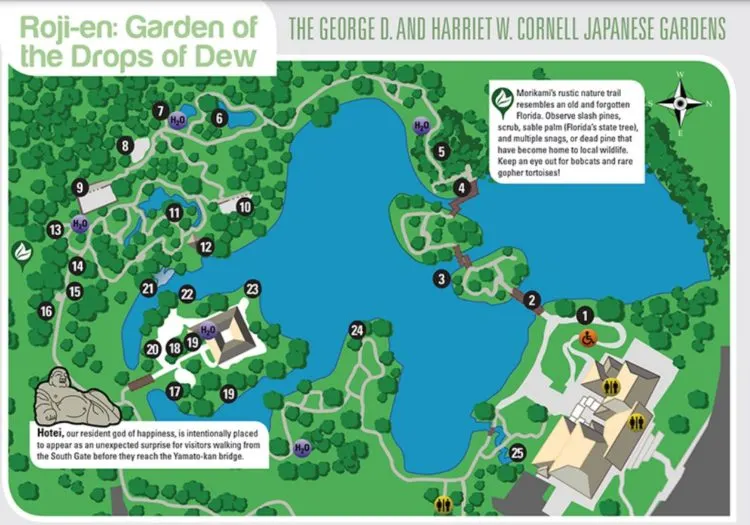
Tours, maps and I-phones: Be sure to stop by the welcome desk to obtain a garden map and other good information. There’s also a QR-code you can scan to get a helpful tour through your cell phone. You can also access the tour at Tours – Morikami Museum and Japanese Gardens or download the free Morikami Museum and Gardens app.
Morikami weddings: The beautiful garden gets great reviews as a wedding venue.
Restaurants near Morikami Museum
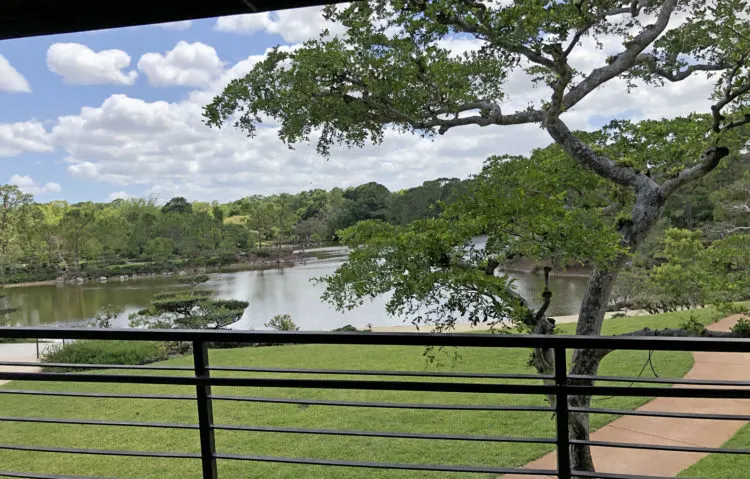
- Cornell Café: On the grounds of the Morikami Museum and Japanese Gardens, this restaurant is rated on Tripadvisor. Serves pan-Asian fare. Open 11 a.m. to 3 p.m. Tuesday through Sunday. Due to Covid, serving is limited. Check website for updates.
Rambler Tip: Try the effervescent Ramune Drink if only for the bottle Codd-neck bottle with the marble inside. I couldn’t figure out how to open it but a nearby diner came to my rescue. Enjoy the journey.
- The Sea: 16950 Jog Road, Delray Beach 561-270-3569 is rated on Tripadvisor. Open lunch and dinner. Serves Southeast-Asian-fusion fare including sushi.
- Angelo Elia Pizza, Bar & Tapas: 16950 Jog Road, Delray Beach; 561-381-0037 is rated on Tripadvisor.
- Open at 4 p.m. for dinner only. The popular local chef serves light, casual Italian food.
- Henry’s: 16850 Jog Road, Delray Beach; 561-638-1949 is rated on Tripadvisor. Open for lunch and dinner. Serves classic American cuisine.
- Way Beyond Bagels: 16850 Jog Road, Delray Beach; 561-638-1320 is rated on Tripadvisor. Open for breakfast and lunch. Deli favorites and more. The name says it all.
- Paneterie: 16950 N Jog Road, Delray Beach: 561-403-5192 is rated on Tripadvisor. Open for breakfast and lunch. French bakery and café.
Rambler Tip: All of these restaurants are within one mile of Morikami Museum and Japanese Gardens. You’ll note that some restaurants share addresses; this is correct as they are in the same strip malls.
Four other curated gardens in Palm Beach County
- Four Arts Botanic Garden and The Philip Hulitar Sculpture Garden: This small botanical garden is divided into specific areas that give you an idea how plants can be used in home landscapers. There’s even a Japanese Garden.
The sculpture garden includes 20 works of art. A walking tour guidebook detailing the sculptures is provided at the entry to the garden.
- Pan’s Garden: A small gem of a garden filled with native plants. Learn more from Florida Rambler.
- Norton Museum Sculpture Garden: The garden is designed to enhance the artwork. It also features a collection of 11 Florida native palm trees.
- Anne Norton Sculpture Gardens: Features 250 species of rare palms and 100 works of art by the artist.
From Florida Rambler: Find more beauty spots in Florida’s 20 spectacular botanic gardens
More on Delray Beach from Florida Rambler
- Delray Beach is a great weekend getaway. Here’s a guide to visiting the lively historic city.
- Wakodahatchee Wetlands and Green Cay Wetlands are excellent places to stroll and see birds and wildlife. Wakodahatchee is in Delray Beach; Green Cay is two miles away in Boynton Beach.

Deborah Hartz-Seeley is a Master Gardener whose yard is certified as Florida Friendly. With a master’s degree in agricultural journalism, she’s written for the Sun-Sentinel, Miami Herald, The Coastal Star, Cook’s Magazine, Florida Food & Farm and Florida Design. If she’s not out back growing things, you’ll find her wandering a garden path or exploring nature on foot, on a bike or in a kayak.
